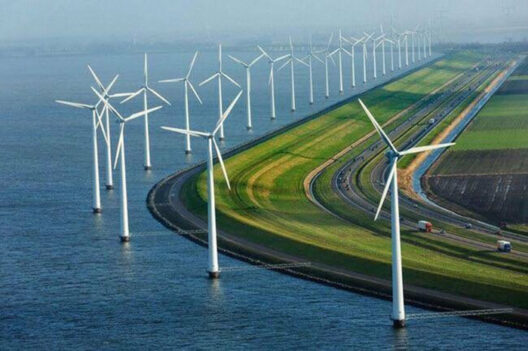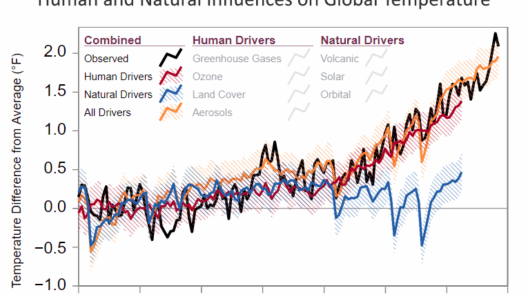The climate crisis looms large, a specter haunting humankind’s future. As the urgency heightens, the quest for innovative solutions to mitigate its impacts intensifies. Will these solutions suffice? Or are we merely grasping at straws in a world careening toward ecological collapse? The discourse surrounding climate change solutions often oscillates between hope and despair, yet the intertwining threads of technology, policy, and collective action suggest that the tapestry of solutions may be more intricate and promising than is often portrayed.
The relentless progression of climate change manifests in myriad forms, fundamentally altering ecosystems, weather patterns, and human societies. To dissect the future of climate change solutions, one must first consider the emerging technologies poised to redefine our relationship with the planet.
Revitalizing Innovation: The Technological Renaissance
In the face of escalating environmental degradation, technology emerges as a beacon of hope. Innovative concepts like carbon capture and storage (CCS) are rapidly gaining traction. This technology captures carbon dioxide emissions from sources like fossil fuel power plants, preventing them from entering the atmosphere. As these systems improve in efficiency and scalability, they could play a pivotal role in achieving net-zero emissions.
Moreover, renewable energy technologies, such as solar and wind power, continue to advance at breakneck speed. Harnessing the inexhaustible energy of the sun and wind not only curtails dependence on fossil fuels but also fosters economic resilience. With prices for solar panels dropping, there is an emerging aesthetic appeal in the widespread adoption of solar rooftops, intermingling seamlessly with urban landscapes.
However, technological prowess is not merely confined to energy generation. Biotechnology offers promising avenues for innovation in agriculture through the development of climate-resilient crops. These genetically modified organisms could withstand extreme weather conditions, potentially ensuring food security in an age where droughts and floods threaten traditional farming practices.
The Policy Labyrinth: Navigating Governance for Climate Solutions
Innovations, however, require a supportive framework to transition from the laboratory to the real world. This is where the intricate web of policy plays a crucial role. National and local governments must shed bureaucratic inertia and adopt policies that not only promote green technologies but also ensure just transitions for all communities.
Tax incentives for renewable energy investments, stringent emissions regulations, and support for sustainable practices in agriculture are only the tip of the iceberg. Policymakers must transcend ideological divides and recognize that climate change is a multifaceted challenge requiring holistic solutions. International agreements, such as the Paris Accord, provide a framework for collective action, yet their success hinges upon the commitment of nations to enforce and exceed their stated goals.
Imagining the potential of policy implementation brings to mind a canvas where the strokes of governance, economic incentives, and community engagement create a vibrant landscape of resilience and adaptation. In this visionary future, local communities become empowered stakeholders, participating actively in decision-making processes that directly affect their environment.
The Power of Collective Agency: Grassroots Movements and Global Action
At the heart of effective climate solutions lies the unwavering spirit of collective action. Grassroots movements have demonstrated that change can burgeon from the ground up. Youth-led initiatives, such as school strikes and advocacy campaigns, breathe new life into climate discourse. These movements encapsulate the fervent desire for change, propelling climate action into the public consciousness.
Local communities, empowered by a shared vision of sustainability, are reimagining their futures. Cooperative farming practices revitalize agricultural landscapes while promoting biodiversity. Urban areas implement green infrastructure, integrating nature into city planning to mitigate the effects of urban heat islands. These grassroots efforts ripple outward, inspiring broader societal shifts and demonstrating the profound impact of individual choices.
Moreover, the digital realm serves as a conduit for knowledge and solidarity, facilitating collaborations across borders. Social media platforms amplify voices that advocate for sustainable practices, making climate awareness a global phenomenon. The aesthetic of activism is not confined to placards and protests; it is woven into the fabric of daily life, echoing through art, music, and literature, compelling society to rethink its relationship with nature.
As one contemplates the interplay of technology, policy, and collective action, it becomes evident that the future of climate change solutions is not a monolithic entity. It is a complex, multifaceted narrative that invites imagination and courage. By embracing the innovations at hand while nurturing a diverse ecosystem of policies and fostering local engagement, humanity can stride confidently into a more sustainable future.
Though the path ahead is fraught with uncertainty, the potential for transformative change unmistakably glimmers on the horizon. The vibrant tapestry of efforts aimed at combating climate change holds promise, reverberating through time as both a rallying cry and an invitation to foster resilience in the face of adversity. Thus, the answer to the question posed is an unwavering yes—there is indeed a future for climate change solutions, cultivated by an amalgamation of ingenuity, governance, and communal perseverance.







